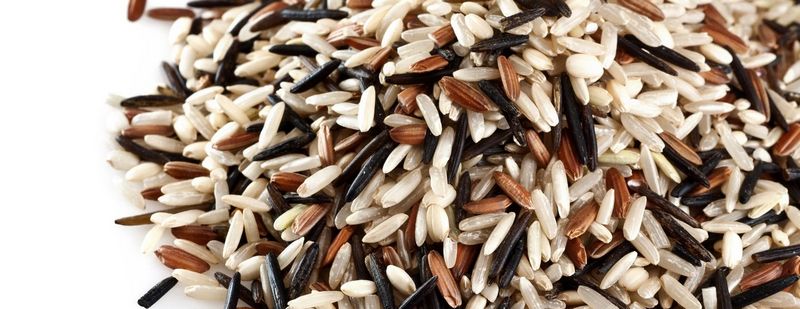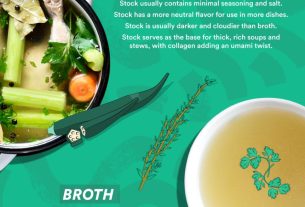Different countries has its own staple food to brag about, but rice is by far the kind of grain considered as staple food in many countries, especially in Northern America and Asia. Rice is nutritious even if it looks plain. It also complements almost any kind of dish you serve it with.
Rice is a versatile grain that comes in different variety and is available anywhere in the world. The two commonly eaten rice are called the basmati rice and the wild rice.
How can you distinguish basmati rice from wild rice? These two kinds of rice has different scent, texture, and color. Typically, the wild rice is grown in a semi-aquatic farm and can come in various color. It is also chewy when cooked. Basmati rice however is grown in soil and known to have originated in India. Basmati rice has a unique aroma.
Here is a more detailed description and difference of basmati rice and wild rice.
Wild Rice
Seeds from grass. Wild rice is considered seeds harvested from an aquatic grass of genus Zizania. Since these seeds are tiny that it also counted as grains. As for the grass, it is believed edible that even its stem is considered a type of vegetable in China.
This type of rice has been popular in China, Canada, and the United States. The latest study showed that 70% of wild rice in Northern America is cultivated in California.
Wild rice can be cooked and served with different kinds of dishes because it is tasteless and tenderly chewy. It is also very healthy especially when it is 100% organic.
Personally, I like wild rice distributed by Lundberg. It is purely organic, very affordable, and available to be purchased even online.
Wild Rice Nutrition
One cup of cook wild rice which is equivalent to one serving contains the following nutritive value:
- 166 calories
- 3 grams fiber
- 7 grams protein
- 35 grams carbohydrates
- 3 grams fats
- 1 gram sugar

Wild rice is also rich in protein unlike other kinds of grains. It is also rich in vitamin B6, niacin, magnesium, manganese, folate, phosphorus, zinc, folate, and fiber.
A study also showed that wild rice contains high amounts of antioxidants. Compared to white rice, its antioxidant content is 30 times higher and that is truly amazing because you can get antioxidants at a very affordable price simply by consuming wild rice.
Sadly, unlike freekeh or brown rice which is popularly known and has many different published studies, there is a very limited study on the nutritional value of wild rice and the health benefits we can get from its daily or regular consumption.
Flavor and Texture of Wild Rice
Naturally, wild rice has a bit earthy and nutty taste as described by those who love to eat wild rice. Some does not like its black tea scent, yet it does not taste like it. Cooked wild rice is tenderly chewy even if it looks firm.
If wild rice is undercooked, it remains almost like a hard grain and it is not chewable therefore, if you are cooking wild rice, you need to follow the instructions on the amount of water it needs and attend to it while it is being cooked to ensure it gets well-cooked.
Basmati Rice
“Basmati” is a Hindi word meaning “fragrant”. Basmati rice is known for its fragrant grains with a mild nutty smell.
Considered by many as the true rice, basmati rice is also a healthy grain and is said to have originated in India.
Unlike wild rice that is planted in semi-aquatic farmlands, this is planted is soil. It is said that more than half of the supply of basmati rice comes from the Indian Himalayas and some harvested from Pakistan.
Basmati rice is famous to have two kinds, the brown rice, and the white rice. White rice is the most commonly eaten type of basmati rice and which is also less inexpensive compared to brown rice. The Indian biryani for example is a cultural dish that uses white rice as main ingredient. There are also other dishes that you can cook with either white rice or brown rice. There will also be a detailed comparison of these two kinds of basmati rice in this article.
Basmati Rice Nutrition
Having said that basmati rice has two types: brown rice and white rice. It is good to know what makes them different from each other. Let us get into the details of each type of basmati rice by starting with the nutritional value of brown rice.
Brown Basmati Rice Nutrition
Dry brown basmati rice with a serving size of ¼ cup has nutritional value equal to:
- 180 calories
- 5 grams protein
- 4 grams fiber
- 0 grams sugar
- 5 grams fat
The nutritional value stated above can lure us to consuming this brown rice but there is also a downside to this.
Brown basmati rice has high arsenic content than other kinds of rice in the market and arsenic is not good for us.
So, why is arsenic bad for us and what is it? Arsenic are found in air, water, and soil. It is a natural element that is not toxic to our body but an inorganic or artificial arsenic which is produced commercially is very harmful to our health.
This artificial arsenic which we consider now as a dangerous chemical is used to fertilized soil to ensure the healthy growth of basmati rice. This chemical is being absorbed by the plant and make the rice also rich in this chemical thus, too much consumption or basmati rice grown inorganically could be dangerous to our health.
However, you can always choose which is grown organically to ensure that it is safe for consumption and truly healthy. Another option is, to choose white rice instead of brown rice.
Flavor and Texture of Brown Basmati Rice
It is expected of brown rice to be fluffy when cooked. It also looks firm yet very chewy because it is rich in fiber.
It is also aromatic, as others described its earthly smell, and it is slightly nutty too.
White Basmati Rice Nutrition
Dry white rice or white basmati in a single serving of about 125 grams contains nutritional value equivalent to:
- 170 calories
- 3 grams protein
- 3 grams fats
- 1 gram sugar
The nutritional value listed above might not look impressive. It has low protein and rich in sugar, but it is a good alternative to unhealthy brown rice due to its arsenic content.
Flavor and Texture of White Basmati Rice
Compared to brown rice, white rice has a mild floral scent and not as nutty. It is also tenderly chewy and has softer texture.
If you wonder if white basmati rice is bleached, the answer is “no” or not as what we literally mean by bleached.
White rice is naturally white because the bran that covers each grain is removed.
Rice is milled or processed to remove its husk so it can become edible. In this process, the bran and germ are also removed, thus it became white rice. The germ and bran of the grain usually contains the vitamins, fiber, and other minerals.
Since the bran and germ of the rice is removed, the nutritional content found in it is also removed, therefore the white rice becomes less nutritious but not unhealthy.
Many countries like Japan and China use white rice and consider it their staple food because of its health benefits.
Which Is Healthier: Basmati Rice or Wild Rice?
Each type of rice is different from each other and also has different nutritive levels, but they all provide health benefits.
Since we know the difference of basmati rice and wild rice, we can now decide which is healthier for us.
Personally, I would pick wild rice because of its high protein, antioxidant, and fibers content.
As the old adage says that everything should be taken in moderation, I believe we can have an ample amount of each or have it alternately so we can get all the health benefits each type of rice can give.
Related Questions
It is always good to learn more about the food we eat especially if we consider it as our staple food like rice be it basmati or wild.
Sometimes choosing what is best for our diet can be confusing too. So, here is more takeaway information for you.
Is Wild Rice Good for Weight Loss?
Wild rice has higher fiber and protein content and antioxidants compared to other types of rice that makes it the best grain to eat if you intend to lose weight.
Nevertheless, if you’re on a diet plan and every calorie you put on the meal is counted, basmati could be the best for you.
Remember, if you are watching your diet due to your doctor’s advice or if you have any health issues, it is always best to consult a dietitian to help you.


